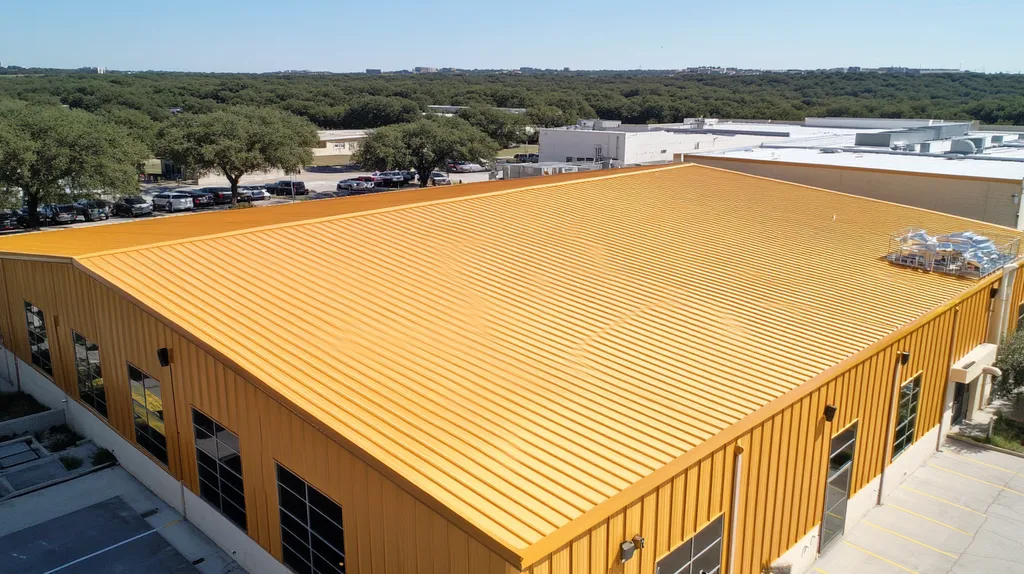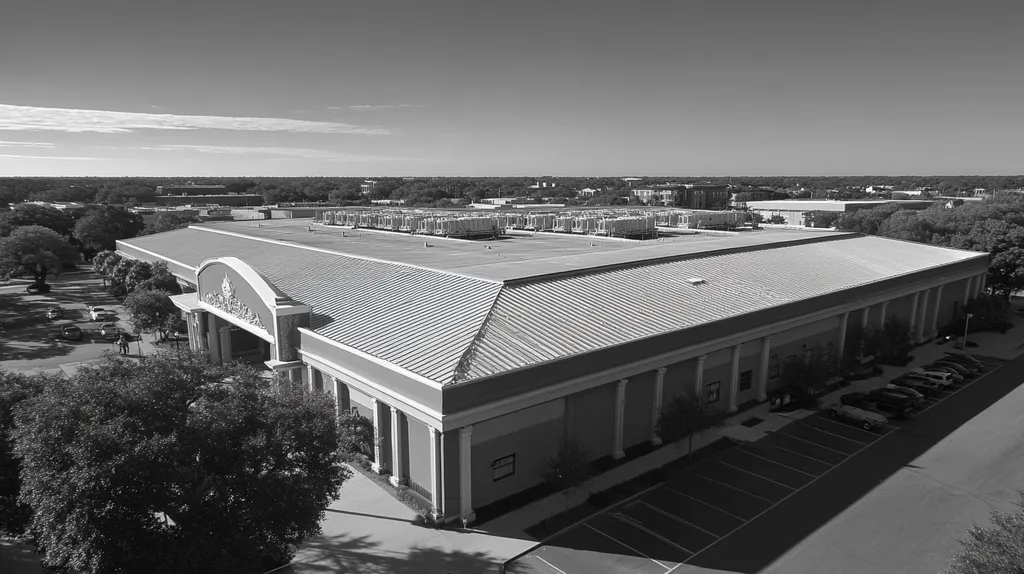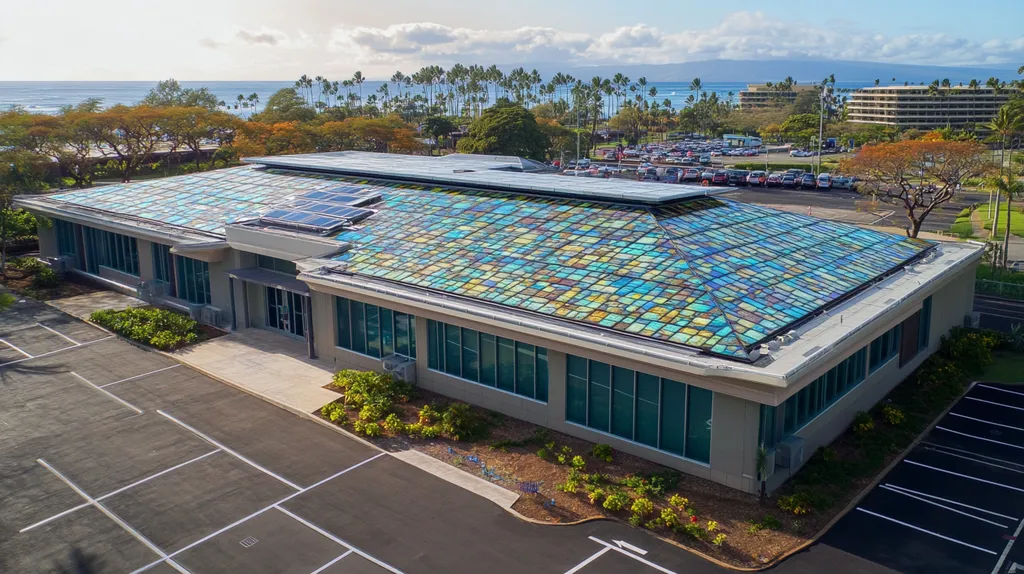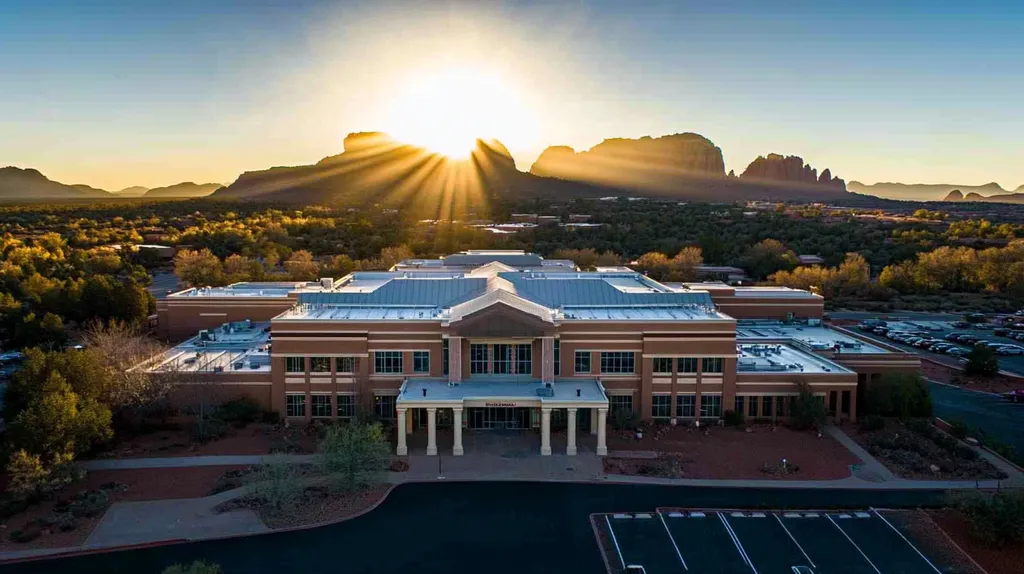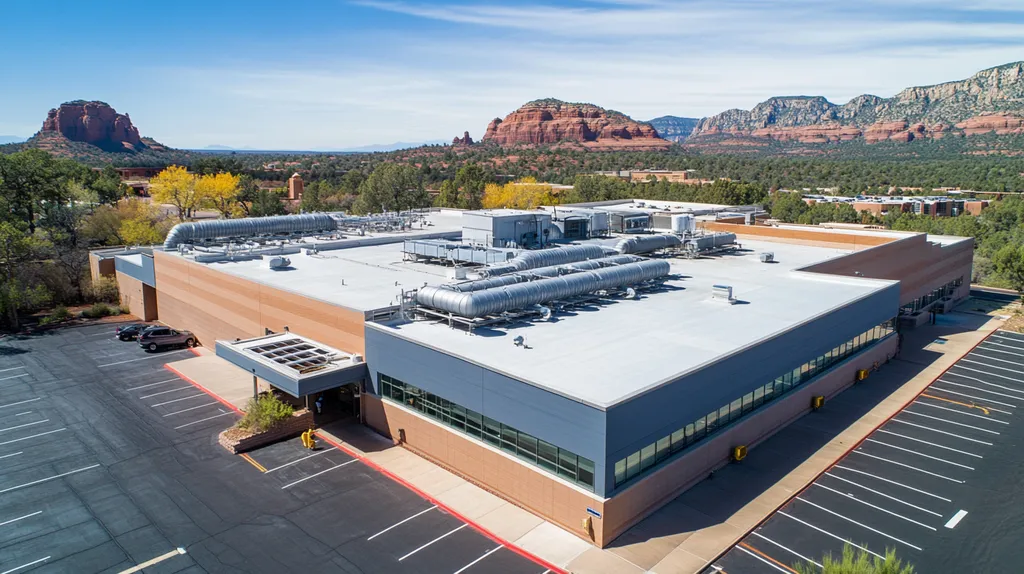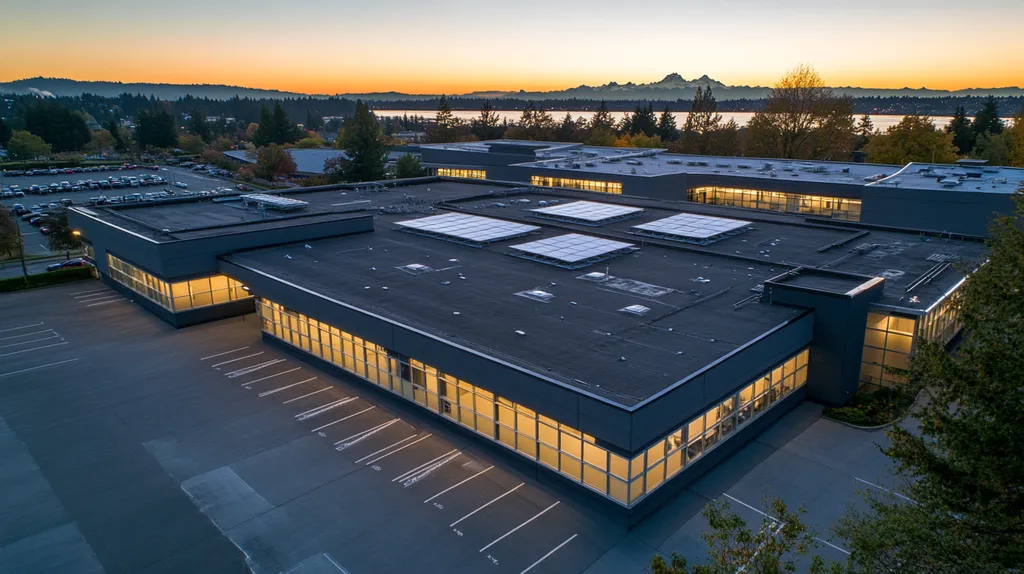Industrial roof coating failures cost facility owners over $2 billion annually in premature replacements and emergency repairs. Despite advances in material science and application technologies, failure rates continue to rise as traditional assumptions about coating longevity prove increasingly unreliable.
Recent studies reveal that up to 40% of industrial roof coatings fail before reaching half their expected lifespan, primarily due to systemic issues in material selection, installation practices, and maintenance protocols.
This analysis challenges conventional wisdom about coating durability factors while examining evidence-based solutions that can dramatically extend roof coating life through advanced materials, monitoring systems, and maintenance strategies.
SECTION 1: CURRENT PRACTICES
Industrial roof coatings represent a critical investment for facility protection, yet their premature failure rates continue to rise. Current industry practices often prioritize short-term cost savings over long-term durability, leading to decreased performance and increased maintenance expenses. A systematic evaluation of standard materials, installation methods, and maintenance protocols reveals significant gaps between ideal practices and common implementation.
Standard Roof Coating Materials and Their Attributes
Commercial roof coatings can extend roof life by 10 to 20 years when properly selected and maintained. Acrylic and silicone coatings typically last up to 20 years, while polyurethane offers similar durability at a higher initial investment. (source: Signature Roofing and Coatings)
Material selection often overlooks crucial environmental factors like UV exposure, chemical resistance, and temperature fluctuations. This oversight frequently results in coatings that underperform in specific conditions, leading to premature degradation.
Cost-driven decisions typically favor lower-grade materials that lack essential protective properties. These choices often ignore the relationship between initial quality and long-term performance, resulting in more frequent recoating cycles.
Regional climate considerations frequently receive insufficient attention during material selection. This oversight can lead to coating systems that struggle to maintain their protective properties under local weather conditions.
Typical Installation Protocols and Industry Norms
Current installation practices often emphasize speed over proper preparation. This approach frequently results in inadequate surface cleaning and insufficient primer application, compromising coating adhesion from the start.
Standard application methods rarely account for building-specific challenges like complex geometries or existing damage. These oversights can create weak points in the coating system where failure is more likely to occur.
Quality control measures during installation typically focus on coverage rates rather than application consistency. This emphasis often leads to variations in coating thickness that can affect overall system performance.
Weather conditions during installation receive insufficient consideration in many cases. This oversight can impact curing times and coating adhesion, potentially reducing the system’s effectiveness.
Routine Maintenance and Inspection Schedules
Current maintenance protocols often rely on reactive rather than preventive measures. This approach typically results in addressing problems after damage has occurred, increasing repair costs and reducing coating lifespan.
Inspection schedules frequently lack the frequency needed to catch early signs of degradation. Many facilities wait for visible problems before conducting thorough examinations, missing opportunities for early intervention.
Documentation of coating performance often remains incomplete or inconsistent. This gap in record-keeping makes it difficult to track degradation patterns and optimize maintenance timing.
Regular cleaning and minor repairs often receive inadequate attention in maintenance programs. This neglect can accelerate coating deterioration and reduce the overall effectiveness of the protective system.
SECTION 2: SYSTEMIC ISSUES
Industrial roof coatings represent a significant investment, yet systemic issues continue to undermine their performance. Property owners face three critical challenges: manufacturer claims that don’t align with real-world conditions, climate considerations that get overlooked, and installation practices that compromise longevity. Understanding these issues is essential for making informed decisions that protect both the facility and the bottom line.
Overreliance on Manufacturer Lifespan Claims
Facility managers often base critical decisions on manufacturer lifespan estimates that reflect laboratory conditions rather than real-world environments. These idealized projections rarely account for variables like mechanical stress, chemical exposure, or maintenance quality.
Warranty terms frequently include limitations and exclusions that leave property owners exposed to unexpected costs. Many warranties become void due to common circumstances that weren’t factored into the original lifespan calculations.
The gap between projected and actual performance creates significant budget planning challenges. When coatings fail prematurely, facilities must redirect funds from other critical areas to address urgent roofing needs.
To avoid these pitfalls, decision-makers should evaluate coating performance data from similar facilities in their region. This approach provides more realistic expectations for maintenance planning and replacement cycles.
Inadequate Adaptation to Regional Climate Variability
Climate variations dramatically impact coating performance, yet many specifications treat all environments equally. Coastal facilities face different challenges than inland locations, while desert regions require different solutions than areas with frequent rainfall.
Temperature fluctuations create thermal stress that can accelerate coating breakdown. Areas with extreme temperature swings often experience faster degradation rates than regions with more stable conditions.
UV exposure levels vary significantly by latitude and elevation, affecting coating durability. Southern regions typically require more robust UV protection than northern locations, even with identical coating systems.
Local weather patterns influence maintenance requirements and coating selection. Regions with high rainfall need excellent water resistance, while areas with frequent storms require superior wind uplift protection.
Common Installation Shortcomings and Their Impact
Proper surface preparation remains the most critical yet often overlooked aspect of coating installation. Inadequate cleaning, insufficient drying time, and poor primer application create weak points where failures begin.
Application thickness varies significantly across projects, affecting coating performance and durability. Inconsistent coverage leads to premature wear in thinner areas while wasting material in others.
Environmental conditions during installation often receive insufficient attention. Temperature, humidity, and dew point measurements must meet specific parameters for optimal coating adhesion and curing.
Quality control measures frequently focus on visual inspection rather than technical verification. This approach misses critical factors like mil thickness, adhesion strength, and cure rates that determine long-term performance.
Installation teams often lack specialized training in modern coating systems. Using general roofing crews for specialized coating applications can compromise system integrity and reduce effectiveness.
SECTION 3: MISSED OPPORTUNITIES
Industrial roof coating failures cost facility owners millions in premature replacements and repairs each year. While advanced materials and monitoring technologies exist, many properties continue using outdated approaches that compromise protection. By identifying and addressing key missed opportunities, facilities can dramatically extend coating lifespans while reducing long-term maintenance costs.
Leveraging Advanced Material Technologies
Modern coating innovations offer unprecedented durability and protection, yet many facilities still rely on basic materials. Advanced formulations incorporating nanotechnology and specialized polymers can extend protection by up to 50% compared to traditional coatings.
Smart coatings with self-healing properties and enhanced UV resistance represent a major leap forward in roof protection. These materials actively respond to environmental stresses, maintaining their protective properties longer than conventional options.
Hybrid coating systems combining multiple protective technologies deliver superior performance in challenging environments. By layering complementary materials, these systems provide enhanced resistance to weathering, chemicals, and mechanical stress.
The integration of bio-based and sustainable coating materials offers both environmental and performance benefits. These eco-friendly options often demonstrate better adhesion and flexibility while reducing environmental impact.
Integrating Predictive Maintenance and Monitoring
Digital monitoring systems using IoT sensors can detect coating deterioration before visible signs appear. These early warning systems allow maintenance teams to address issues while they’re still minor, preventing costly emergency repairs.
Thermal imaging and moisture mapping technologies provide detailed insights into coating performance. Regular scans can identify problem areas like delamination or water infiltration that traditional inspections might miss.
Data analytics platforms can track coating performance trends and predict maintenance needs. This information enables facilities to optimize their maintenance schedules and budget more effectively for future coating work.
Remote monitoring capabilities allow experts to assess coating conditions without physical site visits. This approach reduces inspection costs while increasing the frequency and accuracy of condition assessments.
Customizing Coating Strategies by Building Use and Location
Different industries create unique challenges for roof coatings that require specialized solutions. Chemical plants need different protection than food processing facilities, while distribution centers face distinct challenges from manufacturing plants.
Regional climate variations demand tailored coating approaches for optimal performance. Coastal facilities require enhanced corrosion protection, while desert locations need superior UV resistance and thermal management properties.
Building-specific factors like HVAC placement, roof traffic patterns, and drainage systems impact coating performance. Custom strategies accounting for these elements can significantly extend coating life.
Operational schedules and maintenance access limitations should influence coating selection and application timing. Coordinating these factors with coating requirements ensures better long-term performance and easier maintenance.
SECTION 4: ROOT CAUSES
Industrial roof coating failures cost facility owners millions annually, yet many of these failures stem from preventable issues. Poor quality control, incomplete environmental data, and inconsistent industry standards create a perfect storm that compromises coating performance. When these fundamental problems go unaddressed, they lead to premature coating breakdown, unexpected repair costs, and disrupted operations that affect the entire facility.
Flaws in Quality Control and Application Processes
Equipment calibration and material handling represent critical weak points in coating application. Inconsistent spray patterns, improper mixing ratios, and contaminated materials can create immediate adhesion issues that compromise the entire system.
Weather monitoring during application often falls short of manufacturer requirements. Many crews rely on basic visual assessments rather than using proper monitoring equipment to verify temperature, humidity, and dew point conditions.
Surface preparation standards vary widely between contractors, creating inconsistent results. Some crews skip crucial steps like pressure washing or primer application to save time, leading to coating failure within the first few years.
Documentation of application conditions and processes remains inadequate on many projects. Without proper records of material batches, environmental conditions, and application methods, troubleshooting coating failures becomes nearly impossible.
Insufficient Data on Long-Term Environmental Effects
Industrial facilities lack comprehensive data about how different coating systems perform under specific environmental conditions. This information gap leads to material selections based on marketing claims rather than verified performance metrics.
Chemical exposure from facility operations often creates unexpected coating degradation. Without long-term studies of these interactions, facilities cannot accurately predict how industrial emissions and processes will affect coating longevity.
Temperature cycling effects remain poorly understood across different coating types. While manufacturers test for extreme temperatures, the cumulative impact of daily thermal stress receives insufficient attention.
Regional climate variations create unique challenges that standard testing protocols don’t address. Coastal salt exposure, desert UV intensity, and northern freeze-thaw cycles each demand specialized protection strategies.
Regulatory and Training Gaps Affecting Industry Standards
Current certification requirements fail to ensure consistent application quality across the industry. Many jurisdictions lack mandatory training programs, allowing inexperienced crews to tackle complex coating projects.
Quality control protocols vary significantly between regions and contractors. Without standardized inspection requirements, coating failures often go undetected until significant damage occurs.
Material testing standards haven’t kept pace with coating technology advances. Outdated testing methods may not accurately predict performance for newer coating formulations.
Continuing education requirements remain insufficient for keeping applicators current with new technologies. As coating systems become more sophisticated, this knowledge gap increasingly affects installation quality and long-term performance.
Performance monitoring guidelines lack the specificity needed for modern coating systems. Many facilities still rely on visual inspections when more advanced testing methods could identify problems earlier.
DATA DRIVEN EVIDENCE
Industrial roof coating performance data reveals stark contrasts between theoretical and actual lifespans. Recent studies show that up to 40% of coatings fail prematurely due to inadequate material selection and maintenance practices. Understanding these patterns through empirical research allows facility managers to make data-driven decisions that significantly extend roof life while maximizing their investment.
Empirical Studies on Coating Durability Across Regions
Data from coastal regions shows accelerated coating degradation, with lifespans reduced by up to 30% compared to inland installations. Salt exposure and higher humidity levels create unique challenges that demand specialized coating formulations.
Desert installations face extreme temperature cycling, with surface temperatures fluctuating by up to 100°F daily. These conditions accelerate coating breakdown through repeated expansion and contraction cycles.
Northern facilities experience unique stress patterns from freeze-thaw cycles and snow loads. Studies indicate that proper coating selection can extend roof life by 15-20 years in these challenging environments.
Research demonstrates that UV exposure varies significantly by elevation and latitude. High-altitude facilities require enhanced UV protection to prevent premature coating degradation.
Statistical Correlations Between Maintenance and Lifespan
Commercial roof coatings can extend roof life by 10 to 20 years when properly selected and maintained. Acrylic and silicone coatings typically last up to 20 years, while polyurethane offers similar durability at a higher initial investment. (source: Signature Roofing and Coatings)
Analysis shows that facilities performing quarterly inspections experience 60% fewer emergency repairs than those relying on annual checks. This correlation highlights the critical role of regular monitoring.
Buildings with documented maintenance protocols demonstrate coating lifespans 40% longer than those without structured programs. These results emphasize the importance of systematic care.
Data reveals that addressing minor issues within 30 days of detection reduces major repair costs by 75%. This metric underscores the value of prompt maintenance response.
Cost-Benefit Analyses of High-Performance Coatings
Financial modeling demonstrates that premium coatings typically recover their additional cost within 5-7 years through reduced maintenance needs. This ROI calculation factors in both direct and indirect savings.
Energy efficiency data shows that reflective high-performance coatings can reduce cooling costs by 15-25%. These savings contribute significantly to the total return on investment.
Lifecycle cost analyses reveal that quality coatings reduce total ownership costs by 30% over 20 years. This reduction comes from fewer replacements and repairs needed during the facility’s life.
Studies indicate that buildings with high-performance coatings maintain their value better during property assessments. This preservation of asset value provides additional financial justification for premium materials.
SECTION 6: ALTERNATIVE SOLUTIONS
Industrial roof coating failures cost facility owners millions annually in repairs and replacements. Traditional solutions increasingly fall short as environmental challenges intensify and building demands evolve. While conventional coatings struggle to deliver reliable protection, emerging technologies and maintenance approaches offer promising alternatives that can dramatically extend roof life while reducing total ownership costs.
Adoption of Hybrid and Nanotechnology Coatings
Advanced hybrid coatings represent a significant leap forward in roofing protection, combining multiple chemical technologies to address specific environmental challenges. These innovative materials can self-heal minor damage and provide superior resistance to UV degradation, dramatically reducing maintenance requirements.
Nanotechnology-enhanced coatings deliver unprecedented durability by incorporating particles engineered at the molecular level. This advancement creates surfaces that actively repel water, resist chemical damage, and maintain reflectivity longer than traditional materials.
Climate-specific formulations allow facilities to customize protection based on local conditions. Coastal properties can select enhanced salt-resistance properties, while high-altitude locations can prioritize UV protection.
Manufacturing facilities facing chemical exposure can now specify coatings with targeted resistance properties. This specificity ensures maximum protection against known environmental threats while optimizing material costs.
Implementing Condition-Based Maintenance Programs
Modern sensor systems enable real-time monitoring of coating performance, allowing maintenance teams to detect problems before visible damage occurs. This proactive approach helps prevent minor issues from escalating into major failures.
Digital inspection platforms using artificial intelligence can analyze thermal imaging and moisture data to predict potential failure points. This technology enables facilities to address vulnerabilities during scheduled maintenance rather than emergency repairs.
Remote monitoring capabilities reduce inspection costs while increasing observation frequency. Regular data collection helps establish performance trends that inform maintenance scheduling and budget planning.
Automated alert systems notify maintenance teams when specific metrics indicate potential problems. This immediate feedback allows rapid response to changing conditions, protecting both the coating and the underlying structure.
Enhancing Industry Training and Certification Standards
Commercial roof coatings can extend roof life by 10 to 20 years when properly selected and maintained. Acrylic and silicone coatings typically last up to 20 years, while polyurethane offers similar durability at a higher initial investment. (source: Signature Roofing and Coatings)
Specialized certification programs focusing on advanced coating technologies ensure proper material selection and application. This expertise helps facilities maximize their investment in premium coating systems.
Hands-on training with new monitoring technologies prepares maintenance teams to leverage modern inspection tools effectively. This practical experience translates directly into better coating performance and longer service life.
Ongoing education requirements keep coating professionals current with emerging technologies and best practices. Regular updates ensure that facilities benefit from the latest advances in coating protection and maintenance strategies.
Moving Forward
The industrial roofing sector faces $2 billion in annual losses from premature coating failures, yet proven solutions remain underutilized.
Advanced materials, monitoring systems, and maintenance protocols can extend coating life by 40-60% when properly implemented, but systemic barriers prevent widespread adoption.
The data clearly shows that investing in quality materials, proper installation, and proactive maintenance delivers ROI through reduced repairs and longer service life.
Until the industry addresses fundamental issues in training, quality control, and performance monitoring, coating failures will continue to drain facility budgets and disrupt operations.
The technology and knowledge exist to dramatically improve coating performance – facilities must now commit to implementing these proven solutions.
FREQUENTLY ASKED QUESTIONS
Q. What practices affect commercial roof coating durability?
A. Current practices often prioritize short-term savings, leading to decreased performance and more maintenance costs. Proper material selection and installation methods are critical for long-term durability, but many facilities overlook these crucial factors.
Q. How do industrial roof climate factors impact lifespan?
A. Climate variations significantly impact coating performance, yet many properties do not account for them. Coastal and desert environments present unique challenges that require tailored coatings for optimal protection.
Q. What are common missed opportunities for commercial roofs?
A. Many facilities overlook newer material technologies that can significantly enhance lifespan and performance. Implementing monitoring technologies and predictive maintenance can also help prevent costly failures and maximize coating life.
Q. What root causes lead to industrial roof failures?
A. Failures often stem from poor quality control and inadequate training. Additionally, insufficient data on environmental effects leads to material selections that don’t meet real-world conditions.
Q. How can data improve commercial roof maintenance?
A. Data-driven insights allow facility managers to make informed decisions and optimize maintenance schedules. Regular inspections informed by empirical studies can enhance roof longevity and reduce emergency repair costs.
Q. What alternative solutions are available for industrial roofs?
A. Innovative hybrid and nanotechnology coatings offer better durability and protection. Additionally, condition-based maintenance programs enable timely interventions, preventing costly failures and maximizing the lifespan of the coatings.
Q. How do roofing regulations affect coating choices?
A. Regulations can influence coating selection by imposing specific standards for durability and environmental impact. Staying informed about evolving guidelines ensures facilities comply and choose the right materials.

